Ravens coaches and officials will land in Indianapolis next week for the NFL scouting combine, the next big step in this year’s predraft process. The challenge for general manager Eric DeCosta is as daunting as ever: Peer into the future of one draft class as he tries to figure out the future of his most recent haul.
The Ravens drafted nine players last year, landing impressive rookie starters with their first two picks, cornerback Nate Wiggins and right tackle Roger Rosengarten. But they found more uncertainty with their next seven selections. Will outside linebacker Adisa Isaac elevate the pass rush? How does wide receiver Devontez Walker fit in the offense? Can Devin Leary develop into a backup quarterback?
Clarity might be years away in some cases, but the offseason waits for no one. The Ravens’ rookie class projections will shape how DeCosta approaches free agency and the draft as the franchise looks for a playoff breakthrough. Here’s where the Ravens’ nine draft picks stand during their first offseason in Baltimore.
CB Nate Wiggins (first round, No. 30 overall)

Reason for optimism: Wiggins allowed a passer rating of just 56.3 when targeted in coverage as an outside cornerback, according to The 33rd Team. That was the NFL’s second-best mark among regular corners, behind only teammate Marlon Humphrey (51.7). Overall, Wiggins didn’t allow a touchdown catch, had eight pass breakups and finished with a catch rate allowed of just 50%, according to Pro Football Focus. The spindly Wiggins was also durable, missing just two games — one because of a car crash, the other because of an illness — and playing the Ravens’ seventh-most defensive snaps (680).
Reason for pessimism: Wiggins was surprisingly effective as a run defender, but he had six missed tackles and a 15.8% missed-tackle rate overall, one of the Ravens’ worst marks. Penalties also plagued Wiggins early in the season; he was flagged seven times in his first nine games, three of which were for pass interference.
2025 outlook: Wiggins won’t turn 22 until late August. He has plenty of room for growth, both physically and mentally. When the Ravens drafted Wiggins in April, DeCosta called him the “best cover corner in the draft,” a prospect with “true shutdown-type” potential. At Wiggins’ current developmental pace, it might not be long before he gets there. He has the athleticism to stick to receivers in man coverage and the eyes and instincts to make plays in zone coverage.
RT Roger Rosengarten (second round, No. 62)
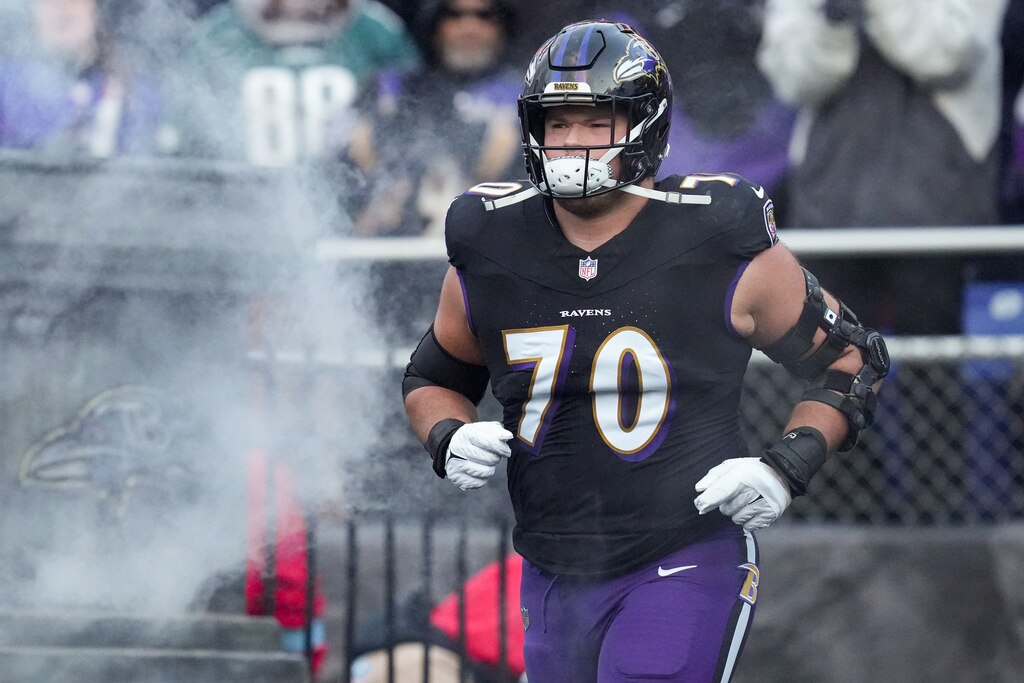
Reason for optimism: From Week 12 to Week 18, Rosengarten graded out as the NFL’s No. 15 offensive tackle among qualifying linemen, according to PFF, and the top rookie tackle overall. During that stretch, he allowed just one sack and five pressures in 175 pass blocking snaps and was flagged for one penalty, a false start. Rosengarten’s light frame and short arms were considered liabilities during the predraft process, but he regularly uprooted defenders to create running lanes late in the season.
Reason for pessimism: If the Ravens don’t re-sign left tackle Ronnie Stanley, their top pending free agent, Rosengarten would be the favorite to take over as quarterback Lamar Jackson’s blind-side protector. Rosengarten came to Washington as a left tackle, but he played just three snaps there over his college career, according to PFF. (As the Huskies’ starting right tackle in 2022 and 2023, he protected the blind side of left-handed quarterback Michael Penix Jr.) Rosengarten’s return to the left side, at least in the early going, could be bumpy.
2025 outlook: Rosengarten is all but certain to start at one tackle position. If he remains on the right side, the Ravens should be able to build on his first year alongside guard Daniel Faalele. If Rosengarten moves to left tackle, he’d have to start over with a new guard, most likely Andrew Vorhees. Wherever Rosengarten lands, he should come back stronger and more self-assured.
OLB Adisa Isaac (third round, No. 93)
Reason for optimism: Isaac seemed NFL-ready as a run defender, showing pop as an edge setter and maintaining his leverage against blockers. He finished the season with four tackles, including a stop for a loss in Week 4 against the Buffalo Bills. Isaac had only three snaps in coverage, according to PFF, but he looked smooth in his drops.
Reason for pessimism: Hamstring injuries can be tough to shake, and Isaac had to deal with a handful of them, from as early as rookie minicamp to as late as the regular season’s final month. He appeared in just four games and played 32 defensive snaps total. As a pass rusher, that inexperience showed. Isaac lacked reliable counters and struggled to win with power, finishing the season without a pressure in his 21 pass rushing snaps.
2025 outlook: Isaac should have a role in the outside linebacker rotation behind Kyle Van Noy, Odafe Oweh, David Ojabo and Tavius Robinson. He can also contribute on special teams. But the Ravens will need more on passing downs from Isaac, whose development this offseason under pass rush coach Chuck Smith is crucial.
WR Devontez Walker (fourth round, No. 113)
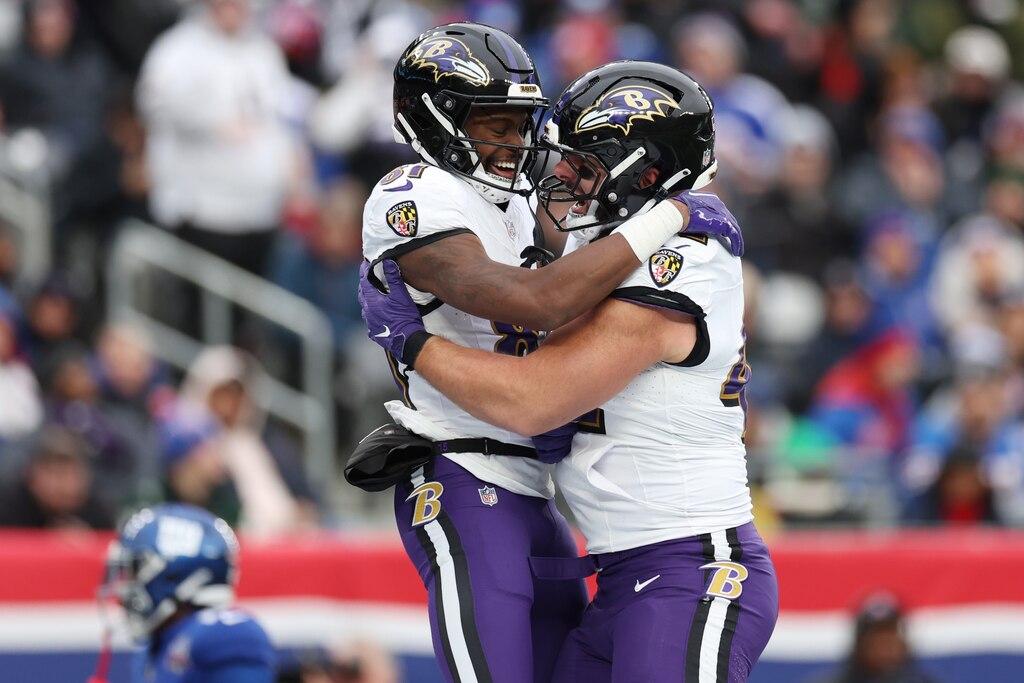
Reason for optimism: As a prospect, Walker had elite measurables. Among wide receivers, he ranks in the 91st percentile for the 40-yard dash (4.36 seconds), the 97th percentile for broad jump, the 93rd percentile for vertical jump, the 84th percentile for arm length and the 59th percentile for height (6 feet, 1 1/2 inches), according to MockDraftable.
Reason for pessimism: Walker played just 57 offensive snaps last season, working primarily as an outside receiver, and earned three targets. His lone catch, a 21-yard touchdown, came on a play-action pass against an injury-depleted New York Giants secondary. Even after spending a full summer and fall in coordinator Todd Monken’s offense, Walker had almost no role in the Ravens’ two playoff games without star Zay Flowers, overtaken by practice squad call-up Anthony Miller and late-season signing Steven Sims.
2025 outlook: Walker’s speed and size make him an appealing field-stretching option, but he’ll need to continue to develop his route-running and blocking ability. According to TruMedia, half of Walker’s 20 routes last season were vertical routes, and poor ball tracking cost him a big play in Week 17 against the Houston Texans. With wide receiver Nelson Agholor, a reliable dirty-work player, headed to free agency, Walker has a chance to claim an important role next season behind Flowers and Rashod Bateman.
CB T.J. Tampa (fourth round, No. 130)
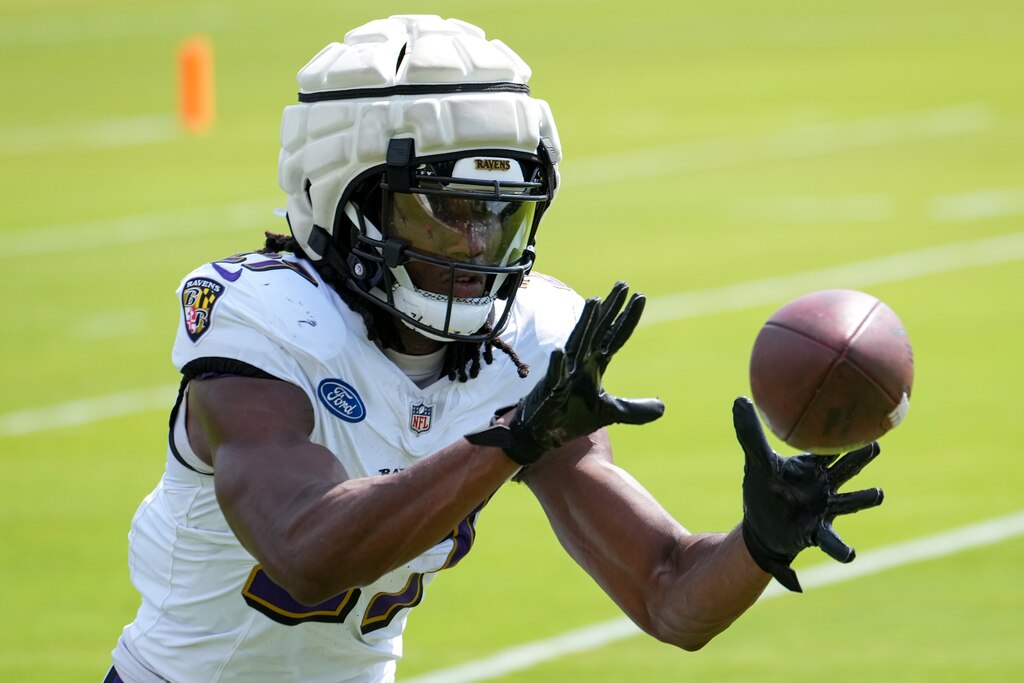
Reason for optimism: Because Tampa’s playing time on defense was limited to blowouts (18 snaps over four games), the Ravens didn’t often ask him to line up in press coverage, where he excelled at Iowa State. In his seven coverage snaps, Tampa was targeted just once, allowing a catch for 4 yards, according to PFF.
Reason for pessimism: Tampa was durable at Iowa State, playing 37 games over his final three years, but he missed significant time in Baltimore with an offseason hernia injury that required surgery and a midseason ankle injury that relegated him to injured reserve. Tampa also had suboptimal pursuit angles in a few open-field opportunities, including a missed tackle against the Bills.
2025 outlook: With pending free agent Brandon Stephens not expected to return to Baltimore, the Ravens should soon have a vacancy at outside cornerback. Tampa can be a contender for the starting job — unless the team believes he has a brighter future in the slot or at safety. Even if he remains a reserve, Tampa should figure prominently into the Ravens’ special teams plans, having played at least 70% of the unit’s snaps in six games last season.
RB Rasheen Ali (fifth round, No. 165)

Reason for optimism: Ali had just 10 carries for 31 yards last season, but he averaged an impressive 0.7 rushing yards over expected per carry, according to the NFL’s Next Gen Stats. A small sample, to be sure, but of the 19 other running backs drafted last year, only three finished the season with a higher average efficiency: the New York Jets’ Isaiah Davis (1.4 RYOE on 30 carries), the Tampa Bay Buccaneers’ Bucky Irving (0.9 on 207 carries) and the San Francisco 49ers’ Isaac Guerendo (0.9 on 84 carries).
Reason for pessimism: Despite his limited workload, Ali dealt with minor neck, hip and ankle injuries over his first year in Baltimore. He also struggled with his ball security in a preseason game, a recurring problem at Marshall.
2025 outlook: Ali could take a step forward in 2025 and still not be good enough to claim RB3 snaps. Derrick Henry and Justice Hill are one of the NFL’s best duos at the position, and Keaton Mitchell will be another year removed from the knee injury that sapped some of his explosiveness last year. With Ali’s speed, his biggest impact could be as a kickoff returner. He returned four for 107 yards in 2024, with a long of 38 yards.
QB Devin Leary (sixth round, No. 218)
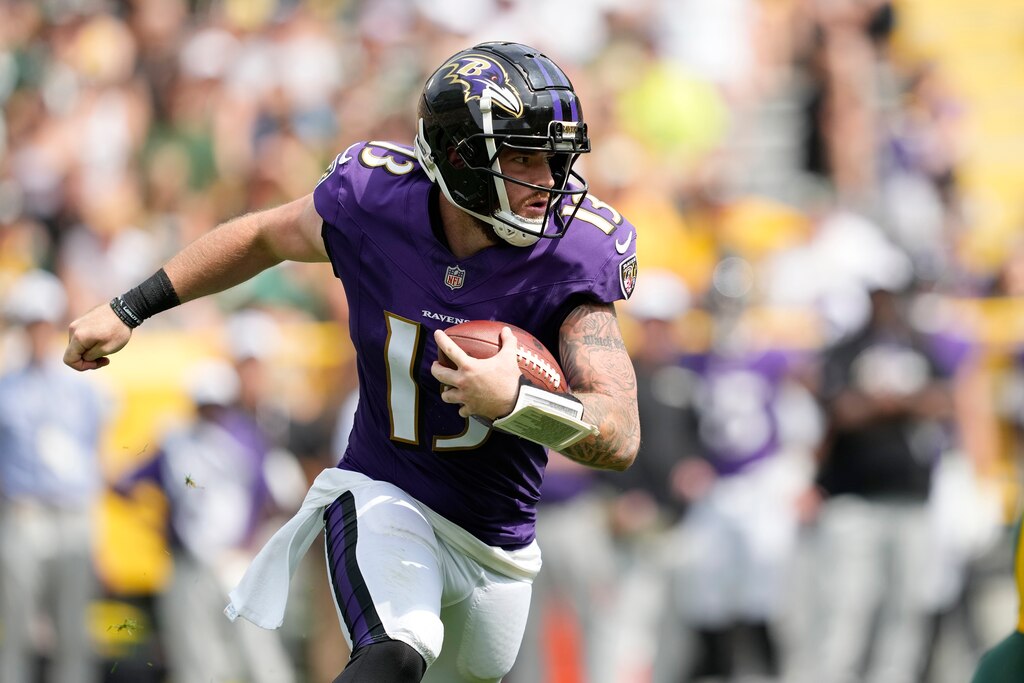
Reason for optimism: Quarterbacks coach Tee Martin said in May that Leary “can make all the throws,” and his arm strength stood out throughout training camp and the preseason. Leary’s understanding of Monken’s offense should improve in their second year together, just as Jackson’s did.
Reason for pessimism: Leary finished the preseason 15-for-28 for 95 yards, throwing two interceptions, taking two sacks and losing a fumble that led to a defensive touchdown. Among the 53 quarterbacks with at least 30 drop-backs in the preseason, no one had a worse passing grade than Leary, according to PFF. He didn’t appear in a game in the regular season.
2025 outlook: Leary was waived when the Ravens finalized their 53-man roster, and he spent the season on their practice squad. Backup quarterback Josh Johnson turns 39 in May, but if DeCosta signs or drafts another quarterback, how much patience will the Ravens have with the 25-year-old Leary?
C Nick Samac (seventh round, No. 228)
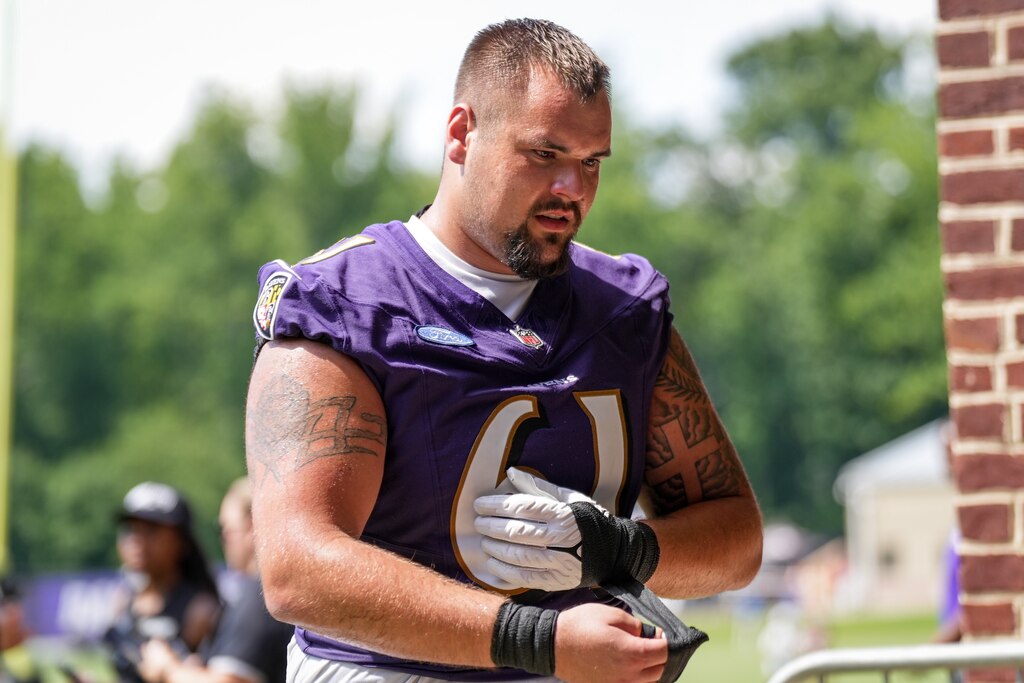
Reason for optimism: Samac had a solid preseason in pass protection, allowing just one pressure in 23 snaps against largely back-of-the-roster players, according to PFF. Late in training camp, Samac impressed coach John Harbaugh enough to earn first-team reps at center when starter Tyler Linderbaum was sidelined. Samac could also be versatile enough to help at guard; that was DeCosta’s hope when the Ravens drafted him.
Reason for pessimism: Injuries were an obstacle in Samac’s first summer in Baltimore. Samac’s recovery from the broken fibula that he suffered in 2023 at Michigan State limited him in offseason workouts, and an ankle injury hampered him in training camp and sidelined him in the Ravens’ preseason finale. Samac got healthy in time for the regular season, but he was a healthy scratch in every game.
2025 outlook: With attrition expected along the offensive line, Samac could enter training camp this summer as the Ravens’ top interior reserve. Another year of development in the team’s strength and conditioning program should help, perhaps pushing him into the mix for a starting guard spot.
S Sanoussi Kane (seventh round, No. 250)
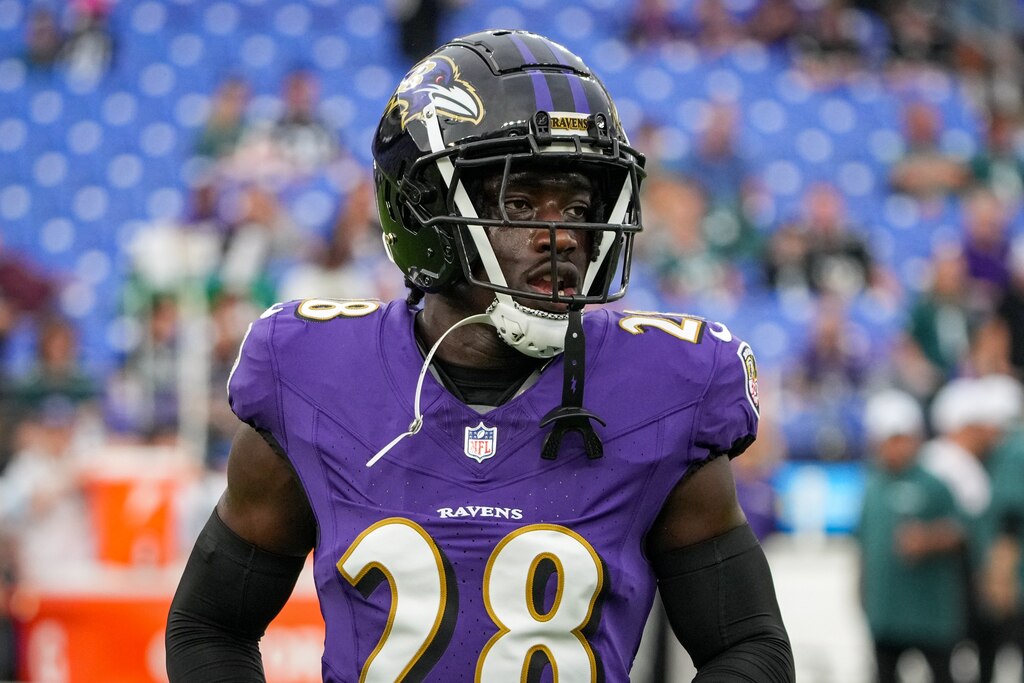
Reason for optimism: In November, special teams coordinator Chris Horton called Kane “the Energizer Bunny for our group” and praised his commitment, physicality and attention to detail. Despite missing two games because of injury, Kane finished third on the Ravens in special teams snaps (325).
Reason for pessimism: Even with the Ravens’ struggles at safety over the first half of last season, Kane never made a push for a spot in the rotation. He got 22 defensive snaps across four games, all blowouts.
2025 outlook: With his special teams ability, Kane probably won’t enter Year 2 on the roster bubble. His next step will have to come on defense. The Ravens need more depth at safety. Can Kane challenge for snaps there in 2025?




Comments
Welcome to The Banner's subscriber-only commenting community. Please review our community guidelines.